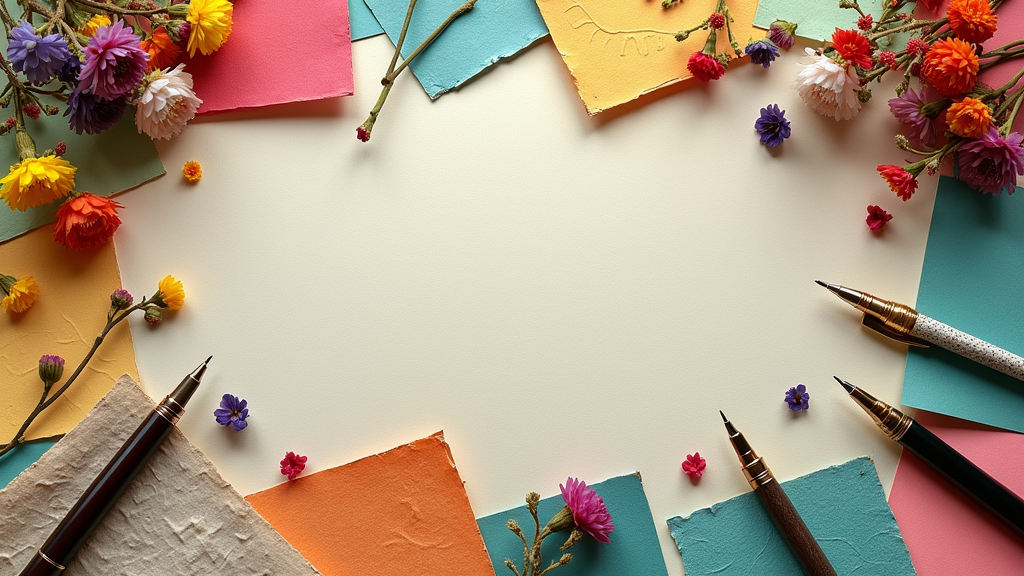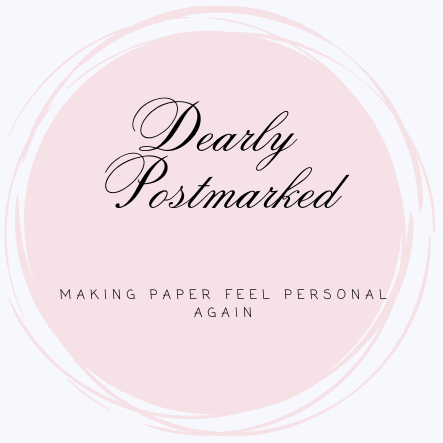Exploring unique paper textures takes writing way beyond putting pen to paper. When I want sensory inspiration or a new creative spark, switching up the kind of paper I use totally changes how I write and how my words feel. Here, I’m sharing some of the coolest, most interesting paper textures and how they can give a boost to the experience of writing for both kids and adults. Whether you love journaling, art, or just want to upgrade your stationery collection, these ideas are worth checking out.

Heads up! This post may contain Amazon affiliate links. That means if you click and make a purchase, I may earn a small commission—at no extra cost to you. I only recommend products I truly love or think you’ll find useful.
A Look at What Makes Paper Textures Special
When talking about paper textures, it’s not just about rough versus smooth; there’s a whole range out there, from handmade papers with bits of flower petals to embossed sheets you can actually feel under your fingers. Paper for sensory writing is all about texture, touch, and sometimes even scent. Choosing papers with these details can help anyone, whether it’s a student with sensory needs, an artist, or someone keeping a memory journal, find a new layer of connection with their words.
Using different papers goes way beyond stationery trends. Studies have even shown that using your senses through touch and scent can improve creativity, memory, and emotional connection. That’s why you’ll see so many options in specialty shops and why paper crafters love hunting down new textures all the time.
Papermaking Basics and How Textures Are Created
Most smooth papers you’ll find are made from wood pulp on big industrial machines. But lots of unique textures come from traditional, artisanal methods. Handmade papers can use recycled clothing, plants, or even flowers and leaves pressed right in. This process not only adds texture but can also bring fun, ecofriendly vibes to your creative process.
For more artsy options, there’s embossed paper, where pressed patterns sit right on top, and deckle edged paper, where the edges are slightly rough and uneven. Scented paper, which has been infused or printed with fragrance, offers another layer to inspire writing in a really different way.
Different Types of Unique Paper Textures
Walking down the stationery aisle (or scrolling through shops online), it’s easy to get overwhelmed by all the choices. Here’s a breakdown of some of my favorite types of sensory papers and what they add to the writing experience.
- Handmade Cotton Rag Paper: Thick, soft, and often with visible fibers, this paper adds a natural, slightly bumpy feel. Perfect for slow journaling or ink heavy calligraphy. Plus, it’s usually ecofriendly!
- Deckle Edge Paper: Those rough, feathered edges come from the way the paper is made. They give each sheet a unique, handcrafted look and a tactile surprise every time you pick a page.
- Embossed and Debossed Paper: Raised or indented designs (sometimes flowers, leaves, or even geometric shapes) add texture you can literally run your fingers over. This is awesome for invitations or letters meant to feel extra special.
- Textured Watercolor Paper: Sometimes called “cold press,” this has a bumpy surface that grabs onto paint and ink, making each stroke unpredictable and visually interesting. Writers who sketch in the margins will love it.
- Sanded Paper: Used for pastel art, sanded paper has a gritty feel. While it’s not ideal for everyday writing, using it for certain creative pages can help wake up your senses.
- Recycled and Eco Papers: These often have little flecks, visible bits of recycled material, or even pressed in flowers and leaves, giving you both a cool look and a rough, varied surface.
- Scented Paper: A treat for the nose as well as the hands! From lavender to vanilla, scented papers can make journaling or letter writing feel almost like aromatherapy.
- Tissue and Mulberry Paper: Incredibly thin and sometimes almost see through, these papers feel delicate and are popular for layering, collage, or creative inserts in notebooks.
- Metallic and Pearlized Paper: Smooth, but with a shimmer and a slightly slick touch that can make both writing and folding origami a new experience.
Why Sensory Paper Matters for Different Writers
Swapping out regular notebook paper for something with texture or scent has real benefits. For students with dyslexia, for example, textured or colored paper can help with focus and memory. For writers or artists who feel stuck, switching to rough or scented paper can help spark new ideas. Young kids often respond really well to the “surprise factor” of raised, bumpy, or scented papers; suddenly, writing their name becomes way more fun. Journaling takes on a new meaning too when you’re pairing your own thoughts with something physical and unique, which is why paper texture is popular in therapy journals, gratitude books, and creative writing prompts.
Getting Started: Tips for Picking and Using Sensory Papers
Trying out new textures doesn’t mean you have to buy a whole stack of fancy imported paper. Here are a few simple ways to mix things up:
- Order Sample Packs: Lots of art and stationery shops sell mixed packs with small sheets of different papers, so you can experiment without spending a lot.
- Start with Scented Sheets: Scented paper is usually budget friendly, especially for kids. Try it out for thankyou notes or a weekly journal entry.
- Use Textured Paper for Special Projects: Save handmade, deckle edged, or embossed paper for meaningful letters, artwork backgrounds, or milestones in your journal.
- Combine Papers: Mix smooth and textured papers in the same notebook or spread for a real tactile surprise, a great trick for creative planners and scrapbookers.
- Test Your Pens and Inks: Not all pens play nicely with textured paper. I like to use fountain pens or bold gel pens for the rough stuff, and finer pens for smooth, metallic papers.
Things to Consider Before Buying Unique Papers
Sensory writing isn’t just about the “feel”; it pays to think about how these papers fit your style and needs. Here are some things I always keep in mind:
- Thickness (GSM): Heavier papers (like watercolor or handmade) stand up to wet inks and collage but might be harder to fold. Lighter papers are easier to carry and layer but can bleed through.
- How Texture Affects Writing: Bumpy or gritty surfaces can be fun, but if you’re writing a ton, a little texture might go a long way before you want something smoother again.
- Cost: Specialty papers can get expensive, so I like to sample first and save pricier sheets for special projects.
- Eco friendliness: Many handmade and recycled papers are great for the planet. Look for eco certifications or local suppliers if that’s important to you.
- Allergies to Scent: Scented papers are fun but check ingredient info if you have any sensitivities.
Thickness and Writing Experience
Paper weight, usually measured in GSM (grams per square meter), can totally change how your pen or pencil feels and even how durable your finished piece is. Watercolor artists might love 300gsm paper, but if you’re tossing your journal in a bag, something lighter and more flexible could work better for daily notes.
Matching Tools to Textures
Experimenting is half the fun. If your pens skip or feather, try a broader tip, soft graphite pencil, or even chalk. Part of the experience is finding what you like, not just sticking to what you know. Many artists even blend traditional pen and ink with markers or pastels for new effects. This kind of curiosity leads to unique writing and art styles.
Choosing Scented Paper Carefully
If you or your recipient is sensitive to smells, check if the scent is artificial or using natural oils. Some shops can tell you exactly how their fragrances are added, which helps in picking the right match. Lavender and citrus are usually safe bets and not too overwhelming. If you’re not sure, you can always request a small test sample before buying a big pack.
Advanced Ideas: Going Beyond the Basics
Once you’re comfortable with new textures and scents, there are all kinds of ways to make sensory writing truly your own:
- Make Your Own Paper: Try a home papermaking kit or a local workshop. It’s hands on, ecofriendly, and you get custom textures every time.
- Layer Textures Together: Use tissue, pressed leaves, or fabric scraps combined with textured paper for creative collages and scrapbook pages. Adding in thread, ribbon, or foil can give a new dimension to your writing projects.
- Experiment with Mixed Media: Try adding wax crayon, pastel, or watercolor to handmade or rough papers. They grip differently and give eye-catching results that pop off the page.
- Host a Sensory Writing Night: Gather friends or family for a creative hour. Pass around textured and scented papers and share what the experience is like; kids and grownups both love this one. You can even turn it into a creative contest with small prizes for the most imaginative pieces.
- Try Embellishments: Stickers, washi tape, simple stamps, or pressed flowers can give your pages even more personality. Combining these with special paper amplifies the tactile fun and makes every notebook page one of a kind.
Taking writing off the screen and into your hands through unique, textured papers adds curiosity, play, and even a little bit of childhood magic to the creative process. Whether you’re journaling, drafting a letter, or just doodling for fun, trying new papers can turn a regular writing session into something much more memorable. For more inspiration, check out blogs on creative journaling, take a spin through your local art supply store, or swap sheets with friends to see which textures you love best. Happy Experimenting!
